-
Posts
20 -
Joined
-
Last visited
Content Type
Forums
Store
Crowdfunding
Applications
Events
Raffles
Community Map
Posts posted by mindee
-
-
-
Hi,NicoD,
What ROM do you use? Armbian or FriendlyDesktop and version? And what & how games do you test? Thank you
-
21 minutes ago, tkaiser said:
Really looking forward to this HAT

BTW: I've not the slightest idea how much efforts and initial development costs are needed for such a HAT. But in case the Marvell based 4-port SATA solution will be somewhat expensive maybe designing another one with an ASMedia ASM1062 (PCIe x2 and 2 x SATA) and just one Molex for 2 drives might be an idea. Could be one design made for NEO4 that will work on M4 too with a larger (or dual-purpose) HAT PCB?
21 minutes ago, tkaiser said:Really looking forward to this HAT

BTW: I've not the slightest idea how much efforts and initial development costs are needed for such a HAT. But in case the Marvell based 4-port SATA solution will be somewhat expensive maybe designing another one with an ASMedia ASM1062 (PCIe x2 and 2 x SATA) and just one Molex for 2 drives might be an idea. Could be one design made for NEO4 that will work on M4 too with a larger (or dual-purpose) HAT PCB?
I think the manufacturing cost is not so high, I am not sure for that now. The NEO4 use a differencet PCIe connector, it’s not a easy thing to fit both with one HAT, considering the signal quality.
-
SpoilerOn 9/13/2018 at 8:36 AM, tkaiser said:
I'm now also testing IO performance on NanoPi M4 to get an idea how much influence the integrated VIA VL817 USB3 hub has. The following test command is used since I test with an el cheapo Samsung EVO 840 (known to exceed 500 MB/s on a SATA port but low capacity and implementing TurboWrite)
taskset -c 4 iozone -e -I -a -s 100M -r 4k -r 16k -r 512k -r 1024k -r 16384k -i 0 -i 1 -i 2 sleep 300 taskset -c 4 iozone -e -I -a -s 2000M -r 16384k -i 0 -i 1 -i 2Why do I test first with 100 MB, then wait 5 minutes and test again with 2 GB?
- Tests with 100 MB to keep results comparable with my previous collection
- An additional test with 2 GB since we found that with fast USB3 implementations and fast SSDs the maximum throughput isn't reported when testing with low test sizes. 1GB or better 2GB seem like a reasonable additional test to look for real maximum bandwidth possible
- Why waiting for 5 minutes (sleep 300) in between? Since my 128GB EVO840 implements TurboWrite and therefore is only capable to write data at maximum speed until the TurboWrite buffer is full. So if I would've tested all block sizes with 1GB test data size the EVO itself would've turned into a bottleneck after approx. 2.5GB data written
- Why 'taskset -c 4' (executing the test on a big core)? Since we're looking for maximum performance here
Raw results as follows
random random kB reclen write rewrite read reread read write 102400 4 25559 28658 21964 22012 21957 28183 102400 16 84846 94435 80322 80926 81083 92975 102400 512 325556 326434 289616 292997 294076 322974 102400 1024 347800 362005 324009 327371 329460 352963 102400 16384 381091 386458 370522 373441 373337 378399 2048000 16384 401465 402916 375361 375457 375509 398665In other words: Even with an USB3 hub in between storage performance is excellent as long as only one disk is connected (with more than one disk and accesses in parallel performance will of course drop since then bus contention issues might occur and bandwidth has to be shared). But with HDDs this is no issue at all since they're too slow anyway.
Storage performance summary: I've had some fear that the internal USB3 hub will trash storage performance but that's not true (at least when only one disk is connected). As a reference numbers generated with same SSD, same settings and same test methodology on discontinued ODROID-N1 (as an example for RK3399 USB3 without hub and also with same SSD connected to a cheap PCIe SATA controller):
Random IO in IOPS Sequential IO in MB/sec 4K read/write 1M read/write ODROID-N1 5994/6308 330 / 340 NanoPi M4 5489/7045 330 / 355 ASM1061 powersave 6010/7900 320 / 325 ASM1061 performance 9820/16230 330 / 330The ASM1061 numbers are especially dedicated to all those SBC users believing into 'native SATA'. Sequential storage performance with a good UAS capable USB3-to-SATA bridge is higher compared to cheap PCIe SATA controllers. 'Native' SATA does not exist with RK3399 anyway and for really high SATA storage performance more expensive SATA controllers making use of more than 1 PCIe lane are necessary. But with just an ASM1061 the only two real benefits of PCIe attached SATA over USB3 attached SATA are
- higher random IO performance
- less IRQs to process which results in less CPU utilization (see ODROID-N1 link above)
But to attach one or two USB3 HDDs and share them at maximum speed (~100 MB/s through network) the NanoPi M4 is perfectly fine.
Edit: Debug output here. We can see the usual 'ERROR Transfer event for disabled endpoint or incorrect stream ring' XHCI error when connecting an USB3 disk enclosure the first time (known problem but doesn't cause any harm) and amount of DRAM is reported differently since I swapped the SD card between my two NanoPi M4
Thanks for your suggestion, we made a SATA HAT prototype for NanoPi M4, it can connect with 4x 3.5inch hard drive and work well.
-
Thanks for your testing on NanoPC-T4, this would be very helpful for someone who want to know about the NVME SSD real performance on RK3399 boards.
-
I recommend NanoPi K1 Plus, it use the 64-bit SoC Allwinner H5, and has 2GB RAM, GigE, WiFi, and can run Android 7.1, Armbian(WIP), Ubuntu Core etc, price is $39.
It can play 4K video very smoothly under Android 7.1, with IR remoter is better for Android TV
-
On 9/2/2018 at 12:34 AM, hjc said:
I've been doing some tests with NanoPi M4 these days. While I'm not a professional board reviewer, here I can share some early performance numbers to you. Beware that none of these tests fit into real world use cases, they are just provided as-is. Besides, Armbian development on RK3399 boards are still at a very early stage, so any of these numbers may change in the future, due to software changes.
Unless mentioned, all tests are done using Armbian nightly image, FriendlyARM 4.4 kernel, CPU clocked at 2.0/1.5GHz
Powering
NanoPi M4 is my first board powered by USB-C, while RK3399 is not power-hungry under normal load, I do doubt if 5V/3A power supply is sufficient when the CPU load goes higher, or when a lot of USB devices are connected. So I went a series of power measurement, with this tool
That is to measure the power consumption on the USB side, excluding the consumption of PSU.
The board is powered by the USB-C charger that came with my Huawei MateBook E, which supports 5V/2A, 9V/2A, and 12V/2A, so theoretically it is insufficient to power the NanoPi M4 board. Unfortunately I can't find a USB-C charger capable of 5V/3A output, and I have to do such test with it.
What if I connected a lot of USB 3.0 device and exceeded the 5V/2A limit? Well, I did try that (connect 4 USB HDD and run cpuburn, or even connect 2 SBCs to the USB), and the answer is simple: the board crashed. But normally the board's consumption will not exceed 10W, so the charger works just fine.
Test setup
1) Idle consumption
This is the typical consumption when you use it as an headless server.
2) Idle consumption with HDMI display output (console tty interface, no Desktop/X11/GPU stuff)
Testing with Dell P2415Q 4k 60Hz display. HDMI connected, with 2560*1440 60Hz video output. Also connect the USB 3.0 hub to
3) Display connected, 802.11ac WiFi with iperf sending
With HDMI display connected (same as (2)), and WiFi connected to 802.11ac 5GHz AP in another room, run the following command:
iperf3 -c 10.24.0.1 -t 60
The WiFi throughput is around 110Mbps
4) Display connected, running cpuburn
With HDMI display connected (same as (2)), run cpuburn on all 6 cores
5) Idle consumption of 4.19-rc1 mainline kernel
Same as (1), but running mainline kernel.
Test results
The idle consumption is 1.79W, and it might need some tuning to reduce the consumption. When WiFi and display are connected, it goes higher to 2.87W.
With an active WiFi networking, the board consumes 4.67W, and with all CPU cores active, it consumes 9.86W.
Mainline kernel has a higher idle consumption, the reason might be DDR dvfs and/or devfreq are not implemented yet.
Based on these results, it seems that 5V/2A power is okay if no peripheral devices are connected. However if you connect any USB devices, it may easily exceed the 2A limit when CPU load goes higher.
CPU/RAM and IO Performance
While RK3399 is not a super fast chip, its performance fits into its position. To reveal the full potential of the board, I'm posting some visualized sbc-bench results taken from mainline 4.19-rc1 kernel here. This is because there might be some DRAM performance issues on RK3399 with 4.4 kernel.. For comparison, I'm also posting the results of Firefly-RK3399 (2.2/1.8GHz overclock, tested by myself), Raspberry Pi 3 B+, ROCK64 and RockPro64 (taken from existing sbc-bench results)
You can see the full sbc-bench log here.
Memory
7-zip
cpuminer
For IO performance, I use iozone to measure the performance of SD card, eMMC and USB SSD. NanoPC T4's NVMe SSD results are added as a reference.
SSD performance are measured by command "iozone -e -I -a -s 1G -r 4k -r 16k -r 512k -r 1024k -r 16384k -i 0 -i 1 -i 2", SD card and eMMC are using 100M instead of 1G size.
Networking
NanoPi M4 comes with a 1Gbps ethernet port and a 802.11ac 2x2 MIMO WiFi module, and I tested both with iperf3.
GbE iperf3 full duplex test:
hjc@nanopim4:~$ iperf3 -c 10.20.0.1 & iperf3 -Rc 10.20.0.1 -p 5202 [1] 27486 Connecting to host 10.20.0.1, port 5201 Connecting to host 10.20.0.1, port 5202 Reverse mode, remote host 10.20.0.1 is sending [ 4] local 10.20.0.2 port 43782 connected to 10.20.0.1 port 5201 [ 4] local 10.20.0.2 port 45102 connected to 10.20.0.1 port 5202 [ ID] Interval Transfer Bandwidth [ 4] 0.00-1.00 sec 64.6 MBytes 542 Mbits/sec [ ID] Interval Transfer Bandwidth Retr Cwnd [ 4] 0.00-1.00 sec 95.1 MBytes 798 Mbits/sec 0 314 KBytes [ 4] 1.00-2.00 sec 110 MBytes 919 Mbits/sec [ 4] 1.00-2.00 sec 94.5 MBytes 793 Mbits/sec 0 320 KBytes [ 4] 2.00-3.00 sec 110 MBytes 920 Mbits/sec [ 4] 2.00-3.00 sec 95.8 MBytes 803 Mbits/sec 0 317 KBytes [ 4] 3.00-4.00 sec 110 MBytes 920 Mbits/sec [ 4] 3.00-4.00 sec 94.5 MBytes 792 Mbits/sec 0 317 KBytes [ 4] 4.00-5.00 sec 110 MBytes 920 Mbits/sec [ 4] 4.00-5.00 sec 94.6 MBytes 794 Mbits/sec 0 314 KBytes [ 4] 5.00-6.00 sec 110 MBytes 919 Mbits/sec [ 4] 5.00-6.00 sec 95.7 MBytes 803 Mbits/sec 0 314 KBytes [ 4] 6.00-7.00 sec 110 MBytes 919 Mbits/sec [ 4] 6.00-7.00 sec 95.5 MBytes 801 Mbits/sec 0 317 KBytes [ 4] 7.00-8.00 sec 110 MBytes 920 Mbits/sec [ 4] 7.00-8.00 sec 94.8 MBytes 795 Mbits/sec 0 314 KBytes [ 4] 8.00-9.00 sec 110 MBytes 920 Mbits/sec [ 4] 8.00-9.00 sec 94.5 MBytes 792 Mbits/sec 0 314 KBytes [ 4] 9.00-10.00 sec 97.2 MBytes 816 Mbits/sec 0 320 KBytes - - - - - - - - - - - - - - - - - - - - - - - - - [ ID] Interval Transfer Bandwidth Retr [ 4] 0.00-10.00 sec 952 MBytes 799 Mbits/sec 0 sender [ 4] 0.00-10.00 sec 949 MBytes 796 Mbits/sec receiver [ 4] 9.00-10.00 sec 110 MBytes 921 Mbits/sec - - - - - - - - - - - - - - - - - - - - - - - - - [ ID] Interval Transfer Bandwidth Retr iperf Done. [ 4] 0.00-10.00 sec 1.03 GBytes 884 Mbits/sec 9 sender [ 4] 0.00-10.00 sec 1.03 GBytes 882 Mbits/sec receiver iperf Done. [1] + 27486 done iperf3 -c 10.20.0.1
Wireless
hjc@nanopim4:~$ iperf3 -c 10.24.0.1 Connecting to host 10.24.0.1, port 5201 [ 4] local 10.23.4.116 port 39730 connected to 10.24.0.1 port 5201 [ ID] Interval Transfer Bandwidth Retr Cwnd [ 4] 0.00-1.00 sec 13.0 MBytes 109 Mbits/sec 13 1.21 MBytes [ 4] 1.00-2.01 sec 12.9 MBytes 107 Mbits/sec 5 618 KBytes [ 4] 2.01-3.00 sec 12.6 MBytes 106 Mbits/sec 0 618 KBytes [ 4] 3.00-4.00 sec 9.35 MBytes 78.7 Mbits/sec 4 329 KBytes [ 4] 4.00-5.00 sec 11.1 MBytes 92.9 Mbits/sec 0 348 KBytes [ 4] 5.00-6.00 sec 10.2 MBytes 85.5 Mbits/sec 0 363 KBytes [ 4] 6.00-7.00 sec 9.37 MBytes 78.6 Mbits/sec 0 387 KBytes [ 4] 7.00-8.00 sec 10.9 MBytes 91.5 Mbits/sec 0 409 KBytes [ 4] 8.00-9.00 sec 13.6 MBytes 114 Mbits/sec 0 409 KBytes [ 4] 9.00-10.00 sec 13.8 MBytes 116 Mbits/sec 0 410 KBytes - - - - - - - - - - - - - - - - - - - - - - - - - [ ID] Interval Transfer Bandwidth Retr [ 4] 0.00-10.00 sec 117 MBytes 98.0 Mbits/sec 22 sender [ 4] 0.00-10.00 sec 116 MBytes 97.0 Mbits/sec receiver iperf Done. hjc@nanopim4:~$ iperf3 -c 10.24.0.1 -R Connecting to host 10.24.0.1, port 5201 Reverse mode, remote host 10.24.0.1 is sending [ 4] local 10.23.4.116 port 39734 connected to 10.24.0.1 port 5201 [ ID] Interval Transfer Bandwidth [ 4] 0.00-1.00 sec 10.6 MBytes 88.8 Mbits/sec [ 4] 1.00-2.00 sec 10.9 MBytes 91.5 Mbits/sec [ 4] 2.00-3.00 sec 4.41 MBytes 37.0 Mbits/sec [ 4] 3.00-4.00 sec 2.07 MBytes 17.3 Mbits/sec [ 4] 4.00-5.00 sec 1018 KBytes 8.34 Mbits/sec [ 4] 5.00-6.00 sec 1.29 MBytes 10.8 Mbits/sec [ 4] 6.00-7.00 sec 6.48 MBytes 54.4 Mbits/sec [ 4] 7.00-8.00 sec 10.8 MBytes 91.0 Mbits/sec [ 4] 8.00-9.00 sec 10.7 MBytes 89.9 Mbits/sec [ 4] 9.00-10.00 sec 10.7 MBytes 89.8 Mbits/sec - - - - - - - - - - - - - - - - - - - - - - - - - [ ID] Interval Transfer Bandwidth Retr [ 4] 0.00-10.00 sec 70.1 MBytes 58.8 Mbits/sec 0 sender [ 4] 0.00-10.00 sec 69.1 MBytes 58.0 Mbits/sec receiver iperf Done.
It's too complicated to analyze the performance of a WiFi connection, but so far I've never seen more than 200Mbps throughput on AP6356S.
Thanks for your testing, this would be very helpful for many end-use.r Want to know the USB 3.0 speed.
-
9 hours ago, renky said:
In general I want to know, how many arm mainboards is it required to order and the manufacturer
starts negotiating about specifications you want to get modified?
I do not say at the same price. If I tell the manufacturer of the orange pi one, I want the arm mainboard
but it must have 4gb ram and usb mini b connectors at what volume number does the
manufacturer start listening? 50000 mainboards?
Thank you.
We(FriendlyElec) can do it. The MOQ is 1000pcs using RK3399, but the engineer fee is $6000, or 1BTC(price is valid within 1 month) , Sample time is 6-7 weeks, you will get 3 samples.
if your order is more than 6000pcs in 12 months. The engineer fee can be returned in the last order.
-
13 hours ago, Igor_K said:
@mindee could you please share the spec differences with M4. I'm torn

Just a little bit list, more detail would be done on wiki soon.
1. NEO4 board size is 45 x 56mm, but M4 is 85 x 56mm
2. NEO4 has 1GB DDR3 RAM with single chanel, But M4 has two version 2GB DDR3 RAM/4G LPDDR3 RAM with Dual Chanel.
3. NEO4 will use AP6212 wireless module with single antenna , but M4 use AP6356S dual-band module, and use 2x2 MIMO and 2 real antennas.
4. NEO4 has one MIPI-CSI, M4 has two MIPI-CSI
5. NEO4 has USB3.0 x1 & USB 2.0 x1, but M4 has USB 3.0 x4 behind a VL817 internal hub.
6. NEO4 use 1.27mm pitch SMD connector for GPIO-40 pinout, M4 is same with RPi3 40pin GPIO.
Both have:
1. PCIe x2 pin-out
2. eMMC module connector
3. GigE port.
4. TypeC is for power supply and OTG.
5. HDMI-A & MicroSD slot.
6. Big CNC heat sink, with two side 1/4 screw hole
-
On 8/21/2018 at 10:23 PM, tkaiser said:
Ok, so it's confirmed:Powering also possible through pins 2 and 4 so since the SoC is at the right side and heat dissipation is no problem @mindee could evaluate a 'SATA HAT' using the 2 PCIe lanes, a Marvell 88SE9235 SATA controller (x2 PCIe to host, 4 x SATA 3.0 to disks) and power circuitry with 12V input able to feed board and 4 x 3.5" disks.
If I understood correctly RK3399's VPU capabilities make it interesting as transcoding NAS (once video support is ready in Linux, though no idea how far things are. @JMCC do you know about the state of video transcoding with RK3399?)
Thanks for your suggestion, we’ll check that.
-
NEO4 would be available in Sep.
-
-
-
22 minutes ago, lucho said:
We're going off-topic here, but could you give some more details? Which SoC will the NanoPi-M4 use? Because there already is an RK3399-based board with the same size as Raspberry Pi 3 – the Rock960.
NanoPi-M4 is RK3399 based too, just no eMMC on board, and no so many interface as NanoPC-T4 So a little lower cost.
-
2 hours ago, lucho said:
I think that the hardware development is already complete, unlike the software development, which has only recently started and is progressing quickly (a new pre-release almost every day).
As to the hardware revisions, the difference between V1.0 and V2.0 is quite large. The difference between V2.0 and the July 2018 batch is only 1 omitted resistor (R895381), which was probably not needed in the first place. So the bare PCB can be the same as for V2.0. In general, the number of hardware revisions of a product is much lower than the number of software revisions. This is natural.
But what's interesting to me is how the price of RockPro64, Orange Pi RK3399, and other RK3399-based boards like the NanoPC T4 can be so low. As many of you probably don't know, the Chinese government subsidises Shenzhen Xunlong Software Company (the maker of the Orange Pi boards), and so they can afford to sell their boards at the BOM (Bill of Materials) cost, not following the "golden rule" that the retail price of a product must be 3 times higher than the BOM cost to pay salaries, depreciation allowances, etc. But their RK3399 board has only 2 GB of DRAM and 16 GB of eMMC flash memory and sells for $109. The 2 GB RockPro64 variant plus 16 GB eMMC sells for even less: just $75. How is this possible? Does the Chinese government subsidise Pine Microsystems as well? Unlikely! Then, what is the secret behind their astonishingly low prices?
NanoPi-M4 will be cheaper and same form factor as RPI 3.

-
I got 28.6H/s on NanoPi Fire3 for mining XMR.
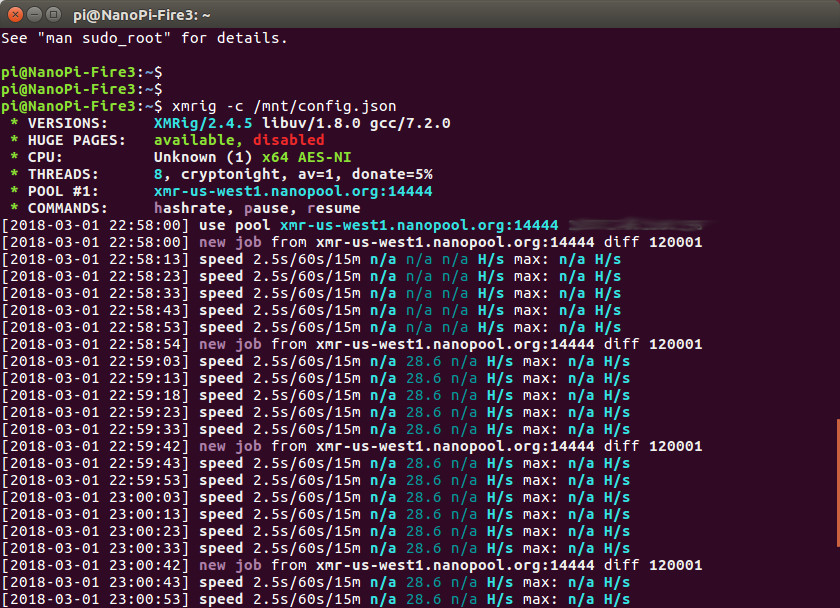
-
Yes, I am waiting for 4.14, Thanks for your working

-
4 hours ago, arox said:
Cute ! But I like boards with ap6212 : I want to connect my IoTs in a mesh network (*) with ppp over bluetooth. And optionaly open a fast channel over wifi.
(*) Has someone some experience in building a mesh network with ad-hoc wifi and olsrd ?
NanoPi Air is very light at 7.9g, and with AP6212, and using the faster eMMC chip already.
And FriendlyARM provided stable FriendlyCore system, which is based Linux kernel-4.11 & Ubuntu Core 16.04, includes RPi.GPIO library, Wiring library etc.
-



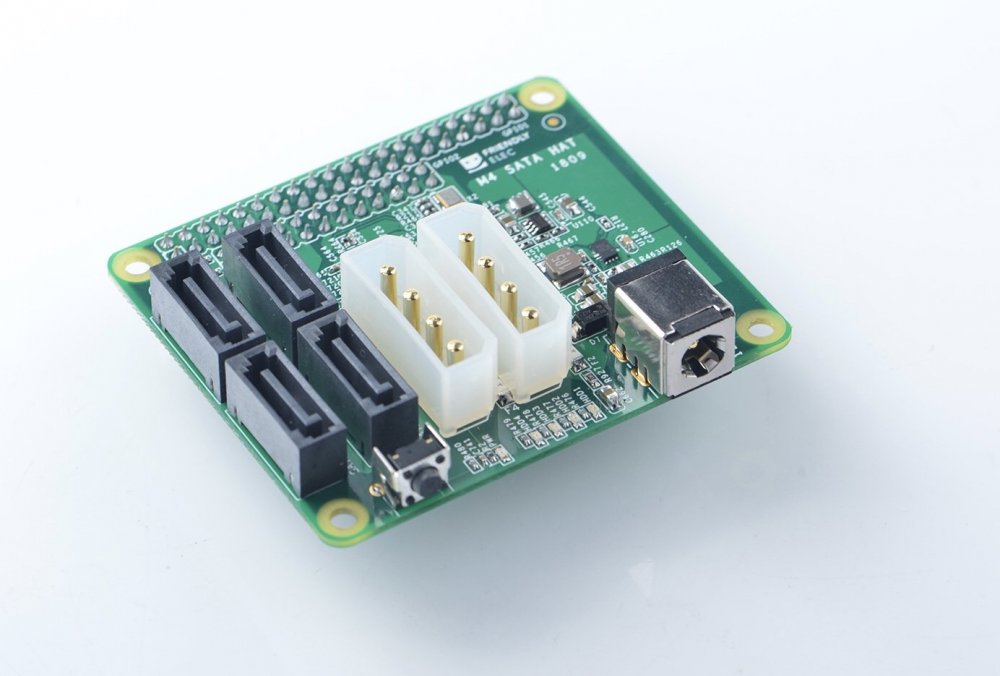
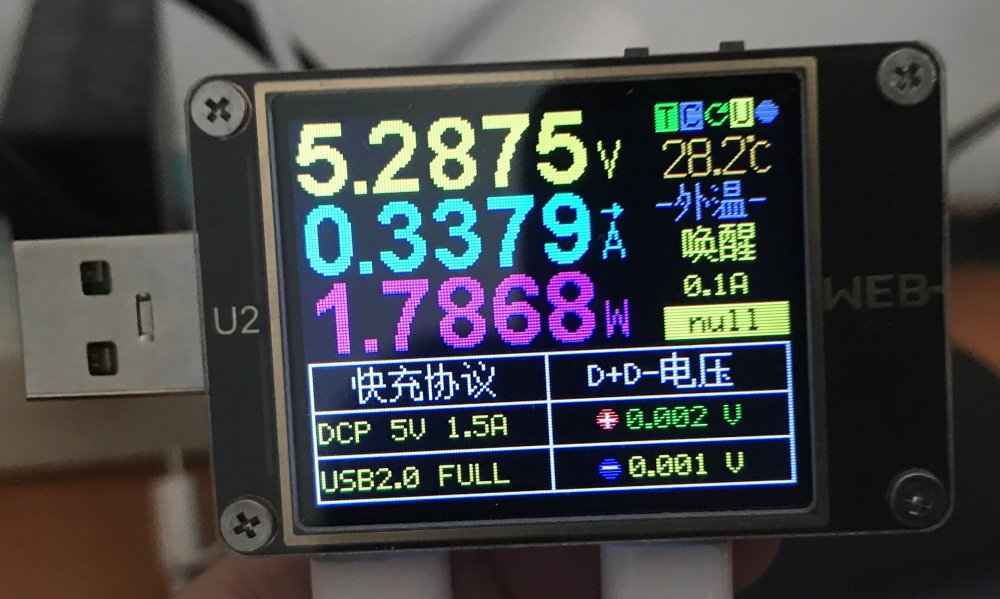
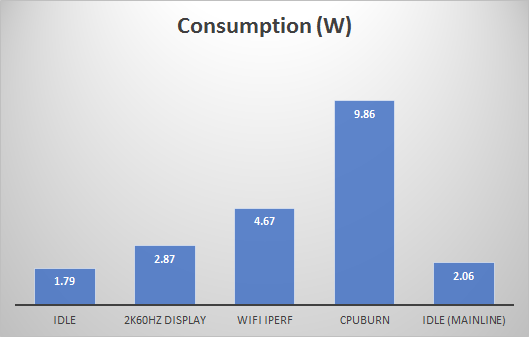

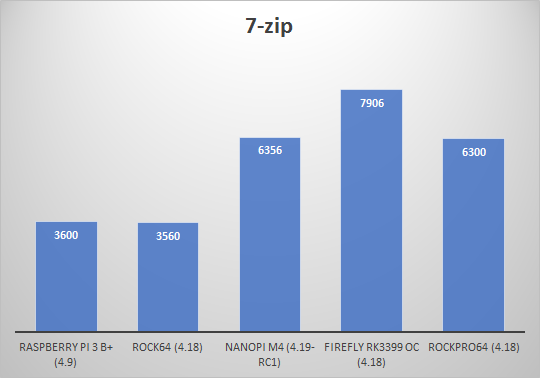
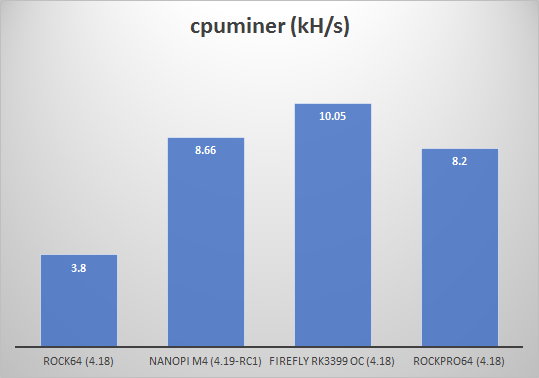
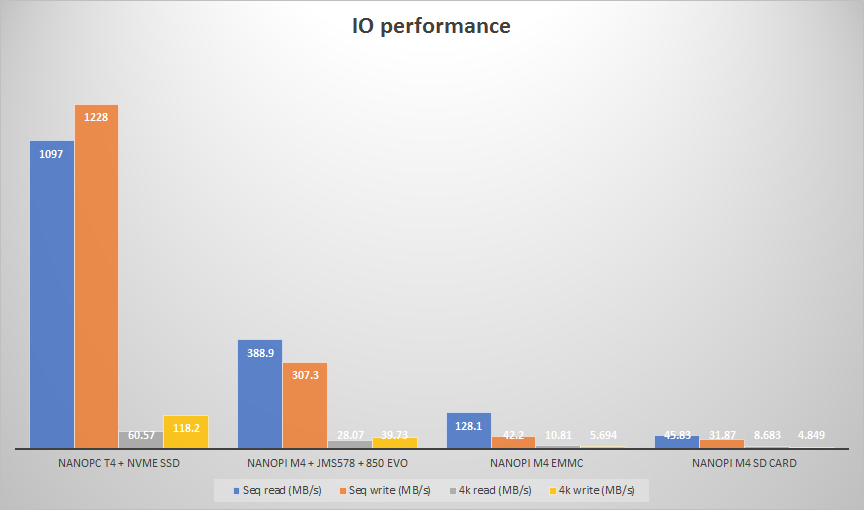

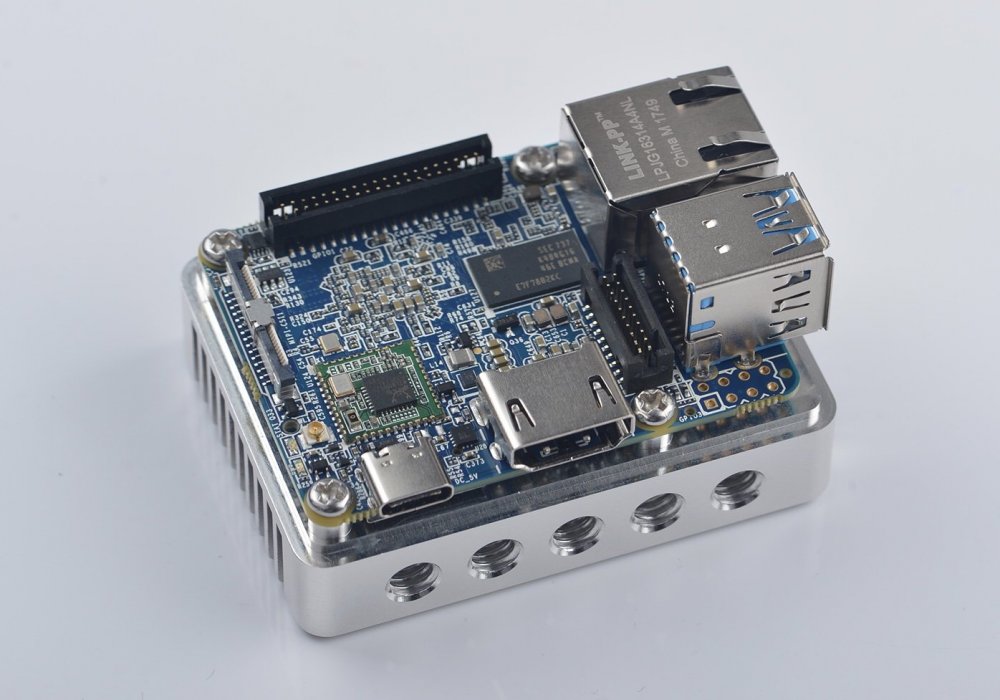
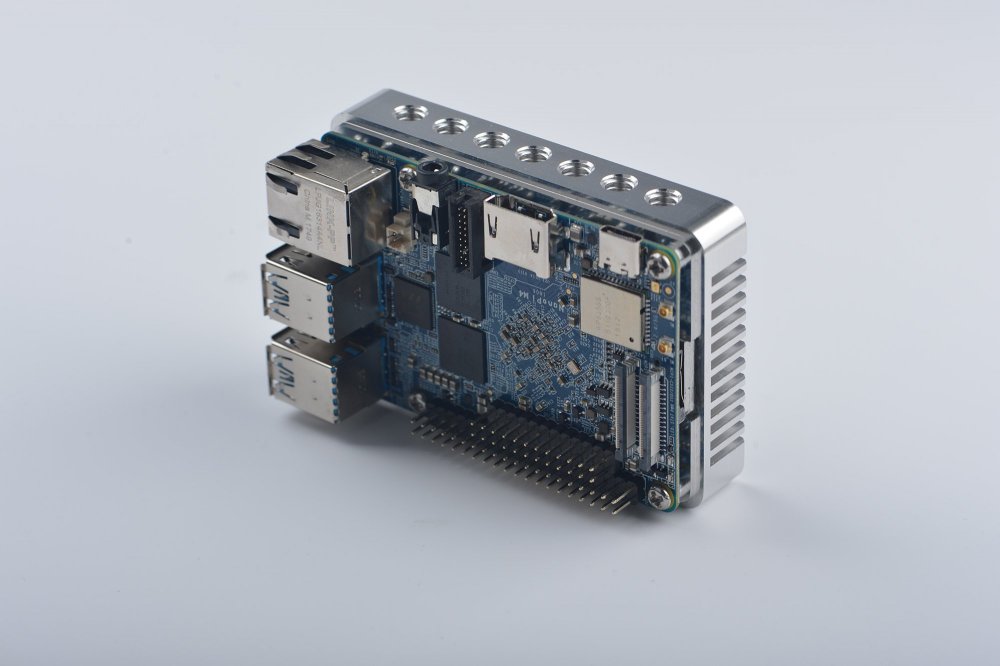

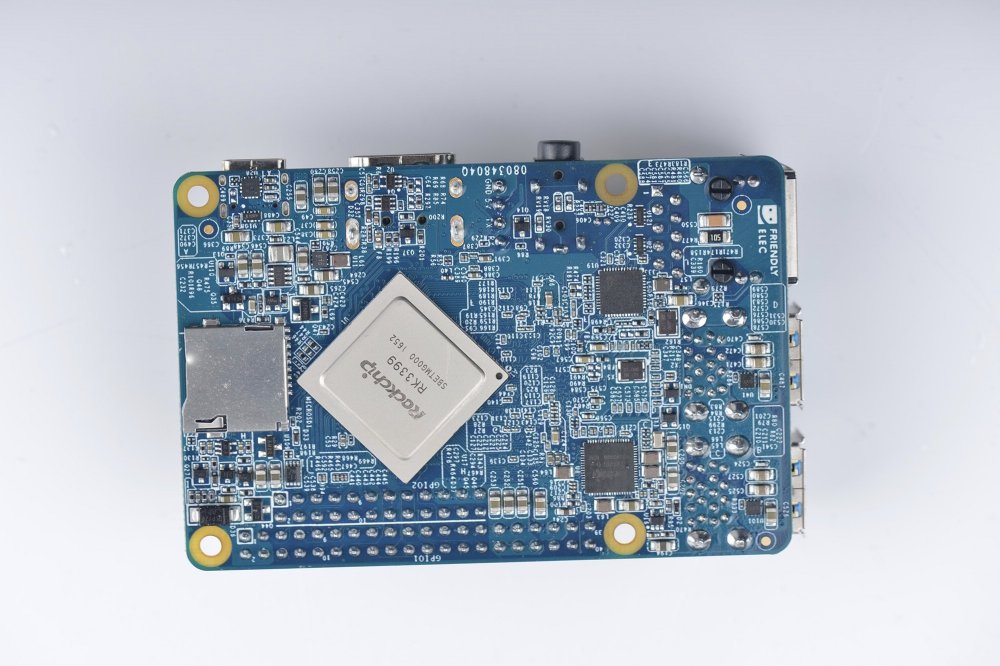
PWM Fan on Nanopi M4 ??
in Rockchip
Posted
Hi,
The NVMe SSD Adapter/HAT for M4 has a fan connector. (https://www.friendlyarm.com/index.php?route=product/product&product_id=262)